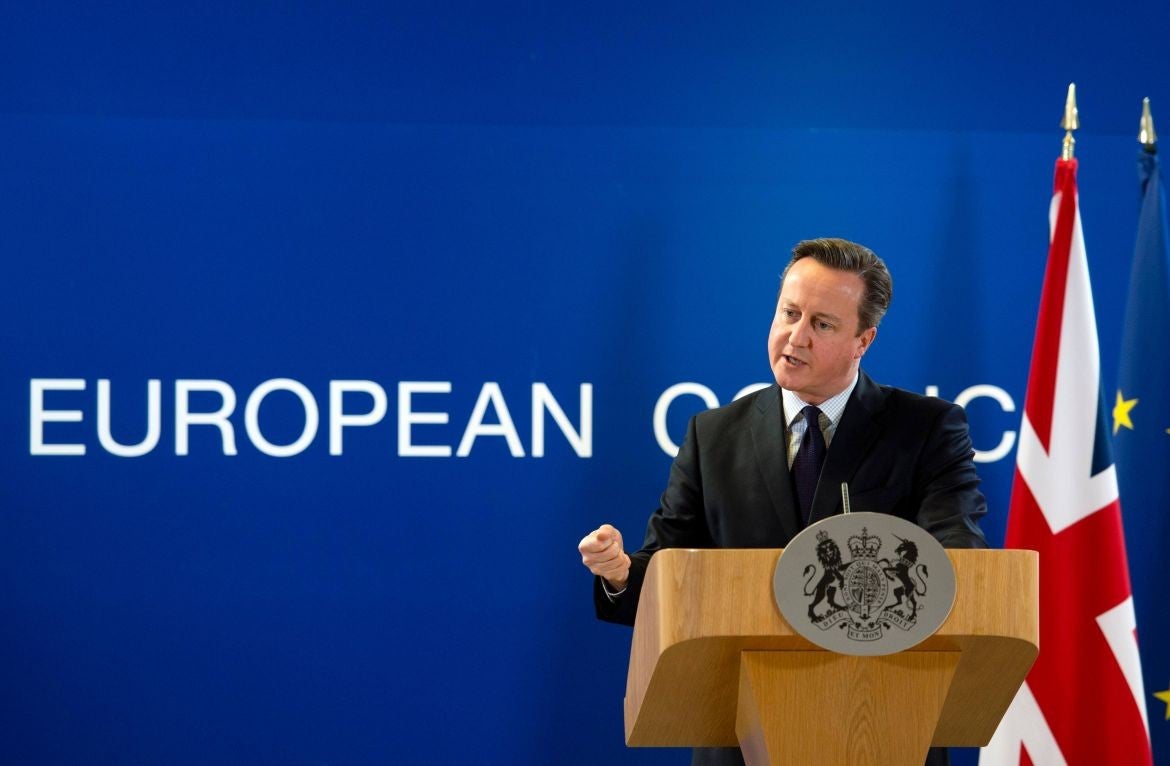EU referendum: Ten things you need to know about David Cameron’s negotiations in Europe
John Rentoul decodes David Cameron's talks in Europe

Support truly
independent journalism
Our mission is to deliver unbiased, fact-based reporting that holds power to account and exposes the truth.
Whether $5 or $50, every contribution counts.
Support us to deliver journalism without an agenda.

Louise Thomas
Editor
What does David Cameron want?
His letter to Donald Tusk, EU president, last month listed four things: Britain to be excluded from the aim of “ever closer union”; reforms to promote competitiveness; protection for non-euro countries; and restrictions on welfare to reduce the “pull factor” for EU immigrants.
Hasn’t he retreated from what he said he wanted before?
You mean you remember his big speech on immigration in November last year? The one in which he said EU immigrants must have a job to go to before they arrive? That was dropped soon afterwards. Douglas Carswell reminded him in the Commons last week that three years ago he had also said his EU renegotiation “would mean returning control over social and employment law” to Britain. Given that the aim is to stay in the EU, there was no point in asking for things he was definitely not going to get.
What has he got already?
The first three items (they call them “baskets”) in the Tusk letter have been agreed in principle. They are not nothing – “ever closer union” is a resonant phrase from the Treaty of Rome, 1957. And some of the welfare “basket” has been agreed: no universal credit for EU job-seekers; and EU immigrants who find no job in six months to be sent back.
What’s he likely to get?
The plan to block child benefit for children who are not in the UK is described by No 10 as “still in play”. This is code for: “The eastern Europeans don’t like it but they’re willing to trade.”
What’s the sticking point?
Denying in-work benefits, such as tax credits, to EU arrivals until they have paid taxes here for four years – many other EU leaders were vocal in their opposition to this “discrimination” at Thursday night’s dinner.
How’s he going to finesse it?
Cameron’s problem is that he made a manifesto promise: “We will insist that EU migrants who want to claim tax credits and child benefit must live here and contribute to our country for a minimum of four years.” Given the refusal of Angela Merkel and others to allow British and other EU workers to be treated differently, the only way he could keep that promise would be to bring in that same contributory principle for British nationals. It would look bad to be denying tax credits to young British workers, who would have to work until they are 23 (or 26 for graduates) to qualify. But the idea of paying in before you take out is popular, and it could be a theme of George Osborne’s Budget, to be delivered on 16 March, after the EU deal might be done.
Are there other ways he could do this?
Cameron has suggested that other ways of reducing the pull factor might be acceptable. Philip Hammond, the Foreign Secretary, said: “Limiting access to welfare benefits is not an end in itself, it’s a means to an end – we’re trying to reduce the attraction of Britain to European migrants.” Sources in the European Commission suggest that it is thinking about an “emergency brake” on immigration if public services are under strain. The problem for Cameron is that the EC would decide if the conditions were met – if that could be changed, he might accept it, but it would still be awkward to break that manifesto promise.
What form might the deal take?
It is still not clear exactly how any changes in the terms of British membership of the EU will be made. One option is a protocol to be attached to the EU treaties, but that would provide for special treatment for the UK and other countries that choose to adopt it; more likely is a legal agreement, to be lodged with the UN, committing EU members to treaty changes in advance – given that it would take too long to revise and ratify the treaties themselves.
What will happen in February?
The next few weeks are “where the rubber hits the road”, in one of the Prime Minister’s favourite phrases. The intention is to have a text drafted for the February meeting of EU leaders. But all 28 members have to agree, so it may be more realistic to see that as a deadline for a first draft, with the real target being an agreement in the summer and a referendum in September.
Why does he want a June referendum?
Because he thinks the deal is nearly done and a dash to the polls minimises the risk that other things could go wrong, such as a worsening refugee problem on the EU’s southern and eastern borders, or a new crisis of the euro.
Subscribe to Independent Premium to bookmark this article
Want to bookmark your favourite articles and stories to read or reference later? Start your Independent Premium subscription today.
Join our commenting forum
Join thought-provoking conversations, follow other Independent readers and see their replies
Comments